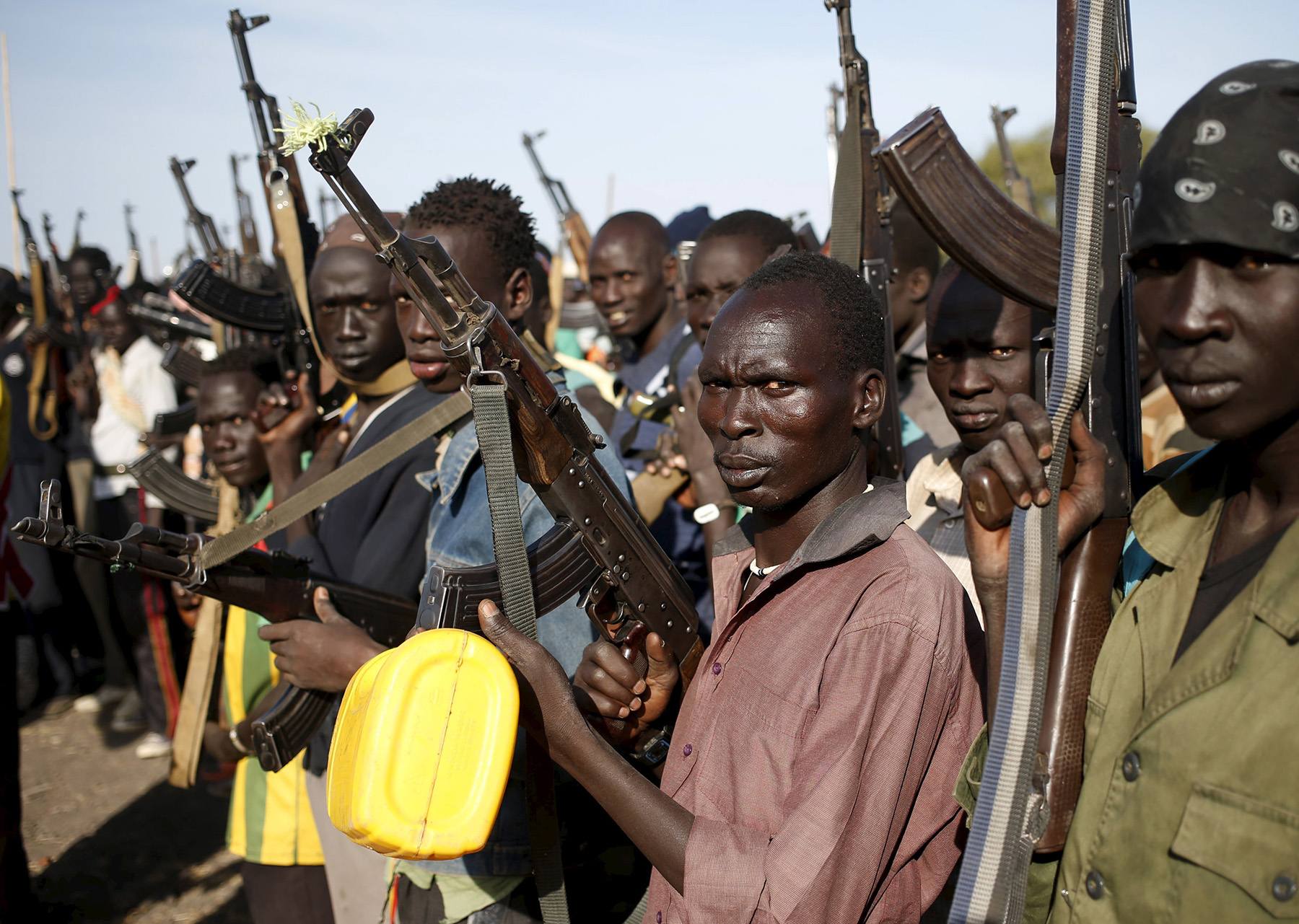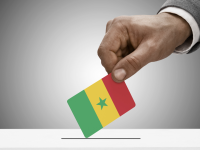To be a child in Nigeria is both beautiful and satisfying to a large extent…

The phenomenon of child soldiers
According to the definition adopted, in 1997, at the Conference organized by the UNICEF at Cape Town on the prevention, demobilization and social reintegration of child soldiers, a child soldier is any person, male or famale, under 18 years of age, belonging to a regular army or any armed group, enrolled voluntarily or by force. Moreover, the term child soldier does not only refer to those who use arms but also those who work as cooks, delivery people, messengers, spies, sex slaves or those forced into marriage. Child soldiers are an integral part of governmental armies, paramilitary groups, irregular armed factions, as well as groups of rebels and terrorists. Their median age is estimated to be under 13 years.
Africa is the most involved continent of the child soldiers phenomenon, with more than 100 thousand minors that are being used in wars between different States.
However, the enrolement of minors involves also Western industrialized countries. In United States the law is fixed at 17 year of age for enrollment in the army and for participation in war operations. Minors participated, in 2003 and 2004, in military operations in Afghanistan and Iraq. Furthermore, in the United States there is the Youth Program of Marines, the “Young Marines”, that is a program of military education and service for boys and girls starting at the age of 8.
The underlying causes are multiple and interrelated of this extreme and systematic violation of the most fundamental children rights, such as the new nature of war, the spread of light weapons and poverty.
Since the end of the 20th century, the nature of the armed conflict has changed considerably, to the point of involving children and adolescents in combat. One of the factors that has permitted the increasing use of children as soldiers has been the change of the technical characteristic of the weapons of war. In the past children did not take part in armies because they were protected, but also because in order to use pre-modern weapons, the force of an adult was needed. Today, unfortunately, the technological perfections allow children to actively participate in war, because of the improvements made in manufacturing. Due to the use of plastic parts, weapons have become so light, manageable and cheap that they can easily be used, even by a child of 10 years. The Kalashnikov AK-47, made by Russia, is made up of nine minor mobile parts, weighs just 3,150 kg and it rarely requires maintenance. A child can learn to use it in about half an hour.
But also the changing of morphology of the conflicts has contributed to the increasing use of minors. However, from the end of the 20th century wars are fed by the logic of profit and consequently are not characterized as fights between States, but they see themselves opposed, more regular armies, numerous oppositional forces, factions, paramilitary groups, and bands of rebels that fight for the conquest and control of the territory in order to exploit resources in an intensive way. They are defined as “wars for resources”. Victory is not important in these conflicts, but rather the purpose of carrying out profitable crimes. War becomes, then, an end and not a mean. In Africa, the exploitment of oil, gold, diamonds, rare minerals and fine wood produces blood shed. Some call this “third generation colonialism” that would be perpetrated by the major economic and financial forces.
In comparison to those of the past, contemporary wars have a longer duration. The new nature of war conflicts has given birth to a sort of “permanent state of war”, that asks of recruits to supply to losses, for which governmental armies and armed fringes resort in a major way to the use of children, who represent an alternative to the recruitment of adults and, as such, multiplies the military capacity of groups and armed factions. These groups, relying on children, can, in fact, regenerate easily and quickly replace their losses.
The use of children is considered precious, and furthermore, inexpensive in terms of training and salary, which is minimal, if not non-existent.
Children are precious prey for the recruiters. For armed bands they are a quick, easy, and low cost way to enrich their own ranks. In economic terms, the use of children lowers the access barriers to the conflict. Moreover, due to their physical and emotional immaturity, children are also easily controlled and above all conditionable: through fear they are forced to obey blindly and to commit the most heinous crimes.
The problem of child soldiers was faced for the first time in 1977 with the Additional Protocols to the Geneva Convention of 1949, relating to the protection of victims in international armed conflicts. The 1977 Protocol I establishes that “The Parties to the conflict shall take all feasible measures in order that children who have not attained the age of fifteen years do not take a direct part in hostilities and, in particular, they shall refrain from recruiting them into their armed forces. In recruiting among those persons who have attained the age of fifteen years but who have not attained the age of eighteen years, the Parties to the conflict shall endeavour to give priority to those who are oldest”. Additional Protocol II establishes that “[Children] who have not attained the age of fifteen years shall neither be recruited in the armed forces or groups nor allowed to take part in hostilities”.
The most important text of reference – that enunciates children rights and the obligations of States towards them – is represented by the International Convention on the Rights of Children, approved by the UN on the 20th of November, 1989 and ratified by almost all countries. In this document, children and adolescents are considered titled of universality of their own rights of every human being, but also bearers of particular needs and interests, implying a specific protection. The Convention of 1989 is based on the passage from the concept of protection and that of childhood and adolescence, to that of recognition of autonomous ownership of certain rights in terms of minors. According to the Convention, the States Parties: “1. States Parties undertake to respect and to ensure respect for rules of international humanitarian law applicable to them in armed conflicts which are relevant to the child. 2. States Parties shall take all feasible measures to ensure that persons who have not attained the age of fifteen years do not take a direct part in hostilities. 3. States Parties shall refrain from recruiting any person who has not attained the age of fifteen years into their armed forces. In recruiting among those persons who have attained the age of fifteen years but who have not attained the age of eighteen years, States Parties shall endeavour to give priority to those who are oldest. 4. In accordance with their obligations under international humanitarial law to protect the civilian population in armed conflicts, States Parties shall take all feasible measures to ensure protection and care of children who are affected by armed conflict”.
Article 39 foresees, furthermore, that States are engaged to adopt measures in order to facilitate psycophysical recovery and social reinsertion of every child victim of an armed conflict. Moreover, the fixation, in a non-binding form, of the minimum age for the recruitment at 15 years is incoherent in respect of the principle of the Convention itself, for which minors are all of the subjects with an age less than 18 years (art. 1), and with the principle of non-discrimination which says: “States Parties shall respect and ensure the rights set forth in the present Convention to each child within their jurisdiction without discrimination of any kind, […]”.
The UN Resolution n. 1261 of 1999 has formally put the problem of children involved in military operations on the agenda of the Security Council because it is a matter concerning the maintenance of peace and international security.
In 2002, the Optional Protocol to the International Convention on Children’s rights has been enacted in relation to the use of children in armed conflicts. This document prohibits the use of children and adolescents under 18 in any hostility. It is also requests to the States to bring to eighteen years the age limit for enrollment or direct involvement in conflicts, and to raise the age for voluntary enrollment above 15 years
old like it is today.
In the same year, the International Criminal Court started to act, its Statute defines, in article 8, that the conscription and enrollment of children under the age of 15 in armies and armed groups, fighting in international and intern conflicts, is considered a war crime.
The International Labor Organization (ILO), with Convention 182, has taken a clear stance on the topic, defining obligatory or forced enrollment of minors in armed conflicts as one of the worst forms of child labor.
Moreover, in the ONU environment, in July 2005, resolution n. 1612 was approved, ordering a monitoring and communication activity to the Security Counsel on the use of child soldiers and on other abuses inflicted on minors in times of war. The resolution offers the possibility to apply sanctions towards countries responsible for grave violations against children rights. The principal sanctions are the exclusion from any governmental institution of States involved in the violations, the freezing of financial resources or the embargo of armies.
Notwithstanding these progressions in the field of international law and the continuous engagement of non-governmental organizations, such as the International Coalition “Stop the use of child-soldiers”, the use of children in armed conflicts is unfortunately not in decline. In certain countries there have been some improvements, whereas in others the situation has remaned the same, if it has non gotten worse. In Afghanistan, Angola and Sierra Leone, the end of the respective conflicts has brought by the demobilization of more than 40 thousand children, but more than 30 thousand others have been involved in outbreaks of violence that have bathed Sudan and Ivory Coast in blood.
Therefore, as all the aboved mentioned initiatives and laws demonstrate, the approach adopted by the international community is to consider children involved in armed conflicts like innocent victims, mainly by non-governmental organizations (NGOs) and United Nations (UN) bodies. Moreover, they are also perpetrators of grave breaches of the Geneva Conventions and Additional Protocol I, or for war crimes in international and non-international armed conflict. As some children take direct part in the hostilities, they are likely to be involved, either directly or indirectly, in the commission of war crimes. Dominic Ongwen, who is now tried before the International Criminal Court, is a clear example of the complexity of the issue. Abducted as a child and forcibly recruited into the Lord’s Resistance Army in Uganda, he rose through the ranks by committing a wide range of war crimes. Futhermore, as adult, he became responsible for the recruitment of children as soldiers in his militia.
As victims, it is argued that children are not culpable and, thus, should not be prosecuted, because their immaturity does not allow them to fully comprehend the consequences of their acts. The prosecution of child-soldiers is an issue the international society is going to have to confront in the future.




